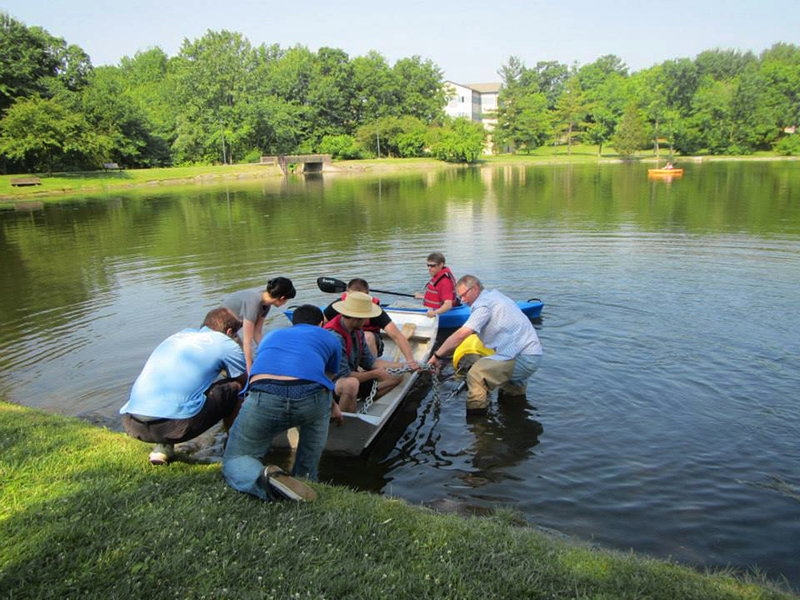

A bright yellow, solar-powered buoy floats in the center of the Gunk, live streaming data via cell phone signal to buoy.newpaltz.edu every 15 minutes, 24 hours a day.
The buoy has been there since June as part of an in-depth study of the Gunk, a network of six ponds on campus that make up the larger Sawmill Brook watershed.
Biology professor David Richardson oversees a team of student researchers whose goal is to collect baseline data on the quality of water on campus in order to monitor changes to the water over time.
K.T. Tobin, sociology professor and chair of the sustainability committee, said the study is a collaborative project between SUNY New Paltz, the New York Department of Environmental Conservation, the New York State Water Resources Institute at Cornell University and the Hudson River Estuary Fund.
“It gets you fired up about the future,” Caitlyn Maceli, a third-year environmental and geochemical science major, said. “It made me learn how to see things as an ecologist, not just as a student.”
Maceli worked on the project full time over the summer along with two other students. She monitored the water at the point before it leaves campus near the South Classroom building and flows into the Sawmill Brook.
Maceli said she compared the samples she collected to the Gunk buoy’s data to find out how the quality of the water changes as it passes through campus.
The group tested physical features of the water, such as temperature and rate of flow. The students also measured chemical and biological factors like pH level, conductivity and dissolved oxygen.
Using the data, the students mapped out the underwater topography of the Gunk.
“Monitoring is not easy because there’s no specific scientific question,” Richardson said. “You’re just looking at what’s happening, so you have to keep at it.”
Maceli said the collaborative nature of the project helped her to better understand how scientific research is done.
“I never really thought that so many little things can contribute to the big picture of what you see out there when you go to the Gunk,” Maceli said.
Climate change models show a likely increase in precipitation in the Hudson Valley. Richardson said that major storm events like the ones that occurred in the last few years will become more likely and more frequent.
Tobin said the data gathered could inform future infrastructure improvements at SUNY New Paltz and take the effects of climate change on the local watershed into perspective. The parking lot across Route 32, for example, is made from permeable materials that allow the ground to absorb potentially polluted water.
“Storm water runoff is an opportunity to pick up pollution or cause flooding,” Tobin said. “We want it to go back into the ground.”
The group will present the final results of the Gunk study on Dec. 11 from 2 to 4:30 p.m. in the Lecture Center.
